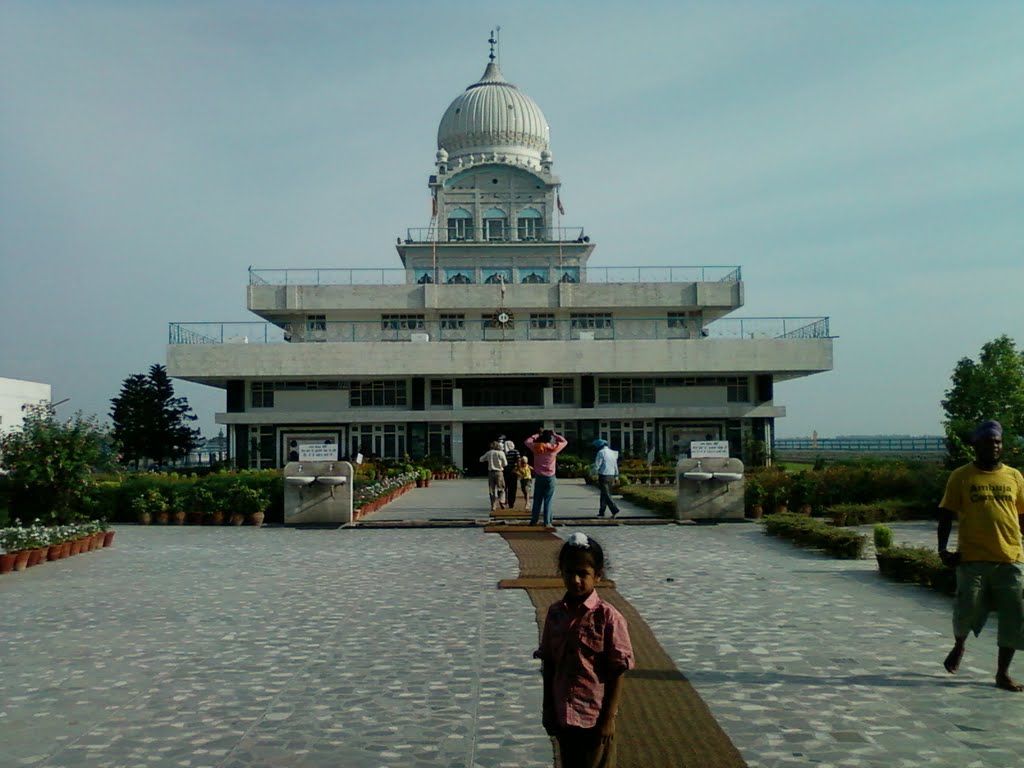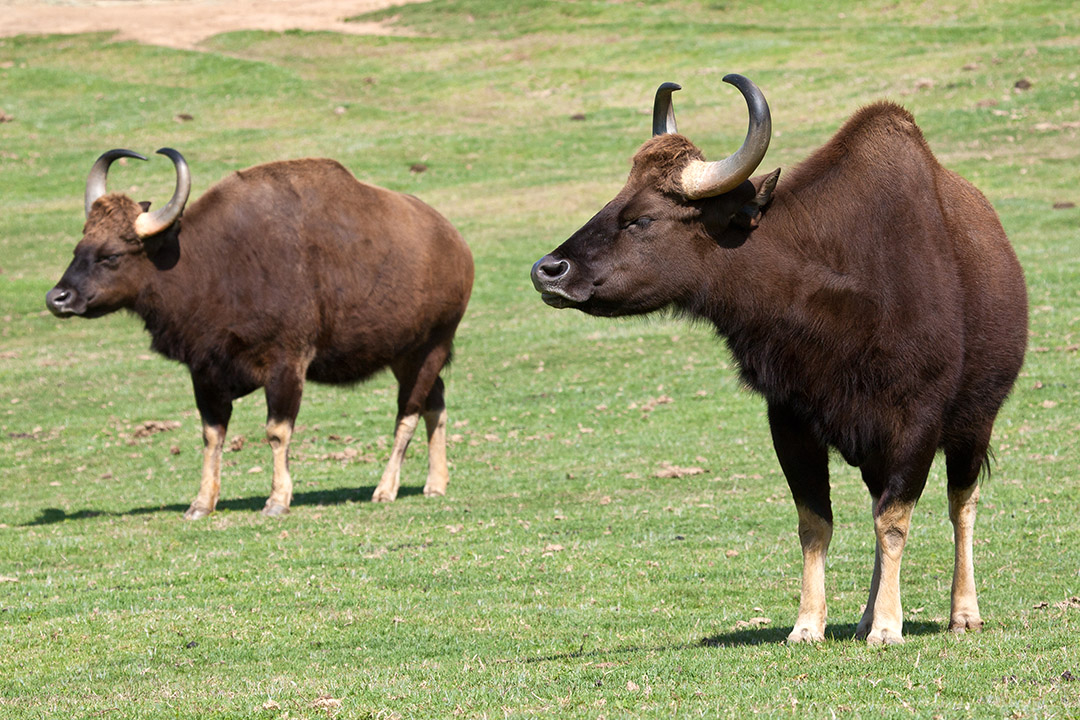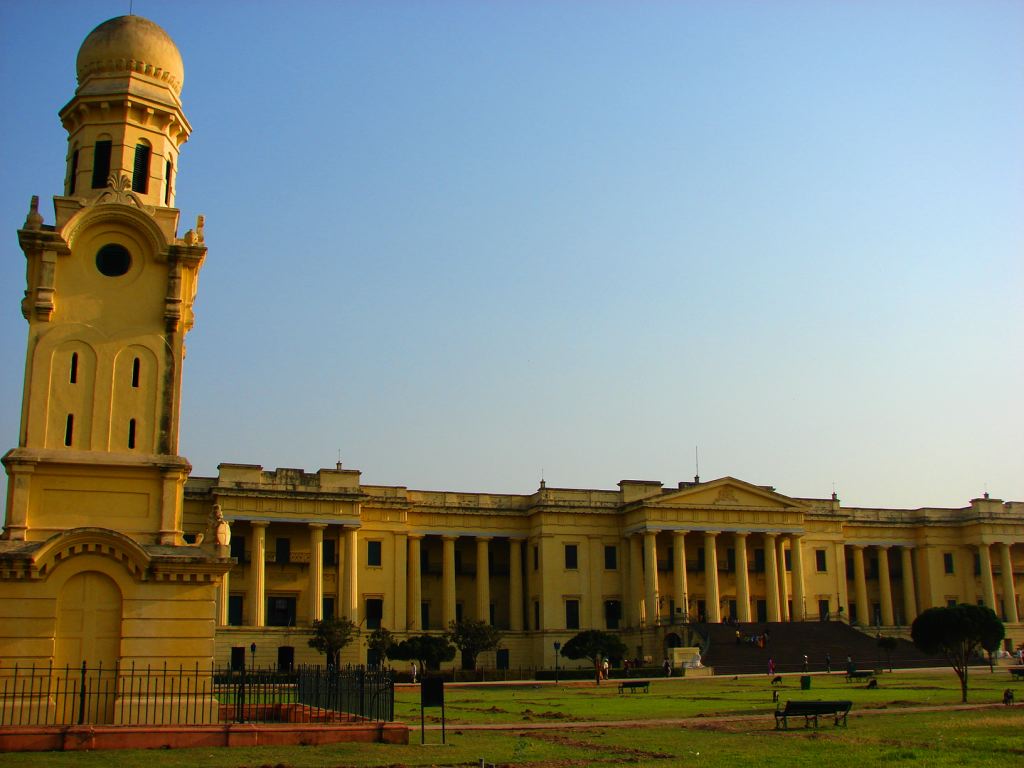
Kolkata Tourism and Travel Guide
History of The City: In 1690, Job Charnok, an agent of the East India Company chose this place for a British trade settlement. The site was carefully selected, being protected by the Hooghly River on the west, a creek to the north, and by salt lakes aboutKolkata two and a half miles to the east. There were three large villages along the east bank of the river Ganges, named, Sutanuti, Gobindapur and Kalikata. These three villages were bought by the British from the local land lords. The Mughal emperor granted East India Company freedom of trade in return for a yearly payment of 3,000 rupees.
What was Calcutta like before the British came?
It was a village; the capital city of Bengal was Murshidabad, around 60 miles north of Calcutta. In 1756, Siraj-ud-daullah, Nawab of Bengal, attacked the city and captured the fort. Calcutta was recaptured in 1757 by Robert Clive when the British defeated Siraj-ud-daullah on the battle field of Plassy. In 1772, Calcutta became the capital of British India, and the first Governor General Warren Hastings moved all important offices from Murshidabad to Calcutta. Till 1912, Calcutta was

the capital of India, when the British moved the capital city to Delhi. In 1947, when India gained freedom and the country got partitioned between India and Pakistan, Calcutta was included in the Indian part of Bengal, West Bengal. Calcutta became the capital city of the state of West Bengal.
At the end of the fifteenth century, a reference to Kolkata was found in the famous novel of Manasa Mangal written by Bipradas. The character of Chand Saudagar in the novel paid a visit to Kalighat to offer puja to the Goddess Kali on the way to Saptagram.
When the Portugese first began to frequent Bengal about the year 1530, the two great centres of trade were Chittagong and Saptagram.
In the Ain-i-Akbari, a work written in 1596 by Abul Fazal in the court house of Emperor Akbar, a reference to Calcutta is noticed under the Government of Satgaon(Saptagram).
1690 August, Job Charnok, an agent of East India Company (established 1600) settles in the village of Sutanutee.
1693 Charnok died.
1696 Fort at Calcutta Factory commenced.
1698 East India Co. bought three villages (Sutanuti, Kolkata, Gobindapur) from local landlord Sabarna Chowdhury.
1699 East India Company started developing Calcutta as a Presidency city.
1707 Mughal Emperor Aurongajeb died.
1715 British people completed building the Old Fort.
1717 The Mughal emperor Farrukh-siyar granted the East India Company trading privileges in return for a yearly payment of 3,000 rupees.
1727 As per the order of King George I, a civil court was set up. The city corporation was established and Hallwell became the first mayor of the city.
1740 Ali Vardi Khan became the Nawab of Bengal.
1756 Ali Vardi Khan died and Siraj-ud-Dawlla (Mirza Muhammad) became the Nawab of Bengal. Siraj-Ud-Dawlla attacked and captured Calcutta. He changed the name of the city to Alinagar.
1757 23rd June, British people (under the leadership of Robert Clive) defeated Siraj-Ud-Dawlla at Plassey (in Nadia district).
1757 British first printed currency bill in Calcutta mint.
1765 Clive took Bengal, Bihar and Orissa from Badsha Alam II (Delhi) with an agreement of paying excises.
1770 Infamous famine.
1772 Calcutta became the capital of British India when the first Governor General, Warren Hastings, transferred all important offices to the city from Murshidabad.

1775 Nandakumar, a local landlord was hung in a false allegation when he accused Warren Hastings of corruption.
1780 James Hicky established a printed press and published first news paper “The Bengal Gazzette”.
1784 The first official news paper “The Calcutta Gazzette”, was published.
1784 Sir William Jones took initiative and established The Asiatic Society.
1795 First Bengali drama ‘Kalpanik Song Badol’ was staged by Gerasim S. Lebedef at Bengali Theatre.
1801 Fort William College was established.
1804 The Governor House (presently Raj Bhawan) was built.
1813 The Town Hall was built.
1818 First Bengali Magazine Digdarshan was published from Srerampur, with the help of David Hare.
1817 The Hindu College (presently Presidency College) was established with efforts from Rammohan Roy, David Hare and Radhakanta Dev. Initially the college started with 20 students.
1828 Sahid Minar (Octorloney Monument) was built.
1829 Rammohan Roy was successful in making ‘satidaho’ (a Hindu rule) banned by British Governor General William Bentinck.
1839 Sangbad Prabhakar, the first Bengali daily was published.
1854 First Railway line in India was inaugurated (from Calcutta to Hooghly).
Nawab Wajid Ali Shah, the last Nawab of Awadh came to Calcutta in 1857. He built the town of Metiaburj and died in 1887.
1857 The University of Calcutta was established.
1864 The GPO (General Post Office) building was constructed.
1873 First Tram car (horse drawn) in the city was launched.
1875 “The Statesman”, leading English Daily newspaper, started.
1875 The Indian Museum was built.
1883 Surendra Nath Banerjee called for a National convention (which led to the forming of Indian National Congress in 1885 at Bombay).
1883 First telephone communication between Calcutta and Howrah through a cable laid beneath the floating Howrah bridge.
1886 Second convention of Indian National Congress happened at Calcutta.
1888 Indian Football Association established.
1895 Scientist Jagadish Chandra Bose experimented on transmission through radio waves at Town Hall.
1896 First motor car appeared on city’s street.
1899 For the first time in Calcutta, electricity was generated.
1902 First Electric tram car from Esplanade to Kidderepore.
1905 Lord Curzon, viceroy of India, tried to partition Bengal. There was a strong protest. Finally he failed to do so.
1911 British moved the capital of India from Calcutta to Delhi
1911 A local football team, Mohan Bagan defeated British team in IFA shield final and created national sensation.
1913 Rabindranath Tagore, the great philosopher, poet and writer received Nobel Prize in literature.
1921 King Edward VIII inaugurated the Victoria Memorial building.
1924 Chittaranjan Das was elected as the first Indian mayor of the city of Calcutta.
1929 Agnes Goinxha Bejaxhiu (Mother Teresa) came to Calcutta to join Bengal Loreto Mission.
1939 The World War II hit Calcutta.
1941 Tagore died.
1941 Subhash Chandra Bose escaped from house arrest by British.
1943 Thousands of people got killed in famine.
1946 Communal riot killed thousands of people in and around the city.
1947 India gained independence. Bengal got partitioned; Calcutta became the capital city of the state of West Bengal in India. Dr. Prafulla Chandra Ghosh became the first Chief Minister of West Bengal, followed by Dr. Bidhan Chandra Roy. Calcutta and suburban area received thousands of people from East Pakistan (now Bangladesh) as a result of the partition.
1952 The National Library was moved to Alipore from Esplanade.
1962 India-China war affected Calcutta.
1971 Tension of India-Pakistan war on freedom of Bangladesh.
1970-71 The Naxalite Movement hit the city resulting arrests of hundreds of youths and creating enormous tension among city dwellers.
1975 First TV transmission started in the city from August 9th.
1977 Left Front led by CPI (M) Party won the state election and came into the power of state Government.
1977 The world famous football player Pele played in a football match in the city.
1978 A major flood hit Calcutta.
1979 Mother Teresa, a permanent resident of Calcutta was

awarded Nobel Peace Prize.
1984 Metro, the first underground railway in India, started from Tollygunge to Esplanade
1984 First color TV transmission started from the TV centre (Door Darshan).
1989 France’s highest civilian award, Legion d’ Honour was conferred upon Satyajit Ray by President F. Mitterrand in Calcutta.
1992 Satyajit Roy, film director, received prestigious “Life Time Achievement” Oscar award and “Bharat Ratna”. He died in the same year.
1995 First cellular phone service starts in the city.
1997 Mother Teresa died in Calcutta.
1998 Amartya Sen (grew up in Shantiniketan and studied at Calcutta) received Nobel Prize in Ecomonics
2001 Calcutta was officially renamed as ‘Kolkata’ from 1st of Januray.
How to Reach?
Kolkata (formerly called Calcutta) is easy to reach by air, rail or road. Kolkata, the capital of West Bengal is a charming city with a 300-year-old heritage and vibrant cultural milieu.
By Air: The airport in Kolkata is situated at Dumdum, around 17 km northeast of the city center. Most of the domestic Kolkataairlines have direct services to and from Kolkata to other important cities of India such as Delhi, Mumbai, Chennai, Patna, Varanasi, Lucknow, etc. Kolkata provides direct flights to most of the countries in the Southeast Asia.
By Rail: The city has two major railway stations-one at Howrah and the other one at Sealdah. Trains from the other parts of the country connect Kolkata. Super-fast trains such as Rajdhani Express and Shatabdi Express connect the city to Delhi and nearby cities such as Bokaro and Rourkela. Coromandel Express and Gitanjali Express connect Kolkata to Chennai and Mumbai respectively.
By Road: Kolkata is connected with most of the Indian cities by road. The Esplanade Terminus in the heart of the city is the main bus terminus. A new development is the starting of the Dhaka-Kolkata bus service. The buses are colorful, air-conditioned and comfortable.
Shopping: Calcutta has a lot to offer the hard-core bargain hunter. From hole-in-the-wall shops that sell T-shirts and jewelery at a steal, to classy arcades in deluxe hotels, there’s something to suit every budget in Kolkata. Over the years, a lot of malls have sprung up all over the city, but if you want a true-blue feel of a good bargain in Calcutta, here’s where you should spend your shopping money:
New Market: If you stand outside this sprawling market complex and crane your head in the right direction, you might still spy a faded sign or two that still refer to this place as Hogg Market. However, if you’d rather plunge into the heart of the shopping game, here’s the best place to start bargain hunting in Kolkata. Shiny plastic clips, faux crystal ware, flowers, fabric, toys, luggage, ready-to-wear clothes, shoes, crockery, candles, swimwear, uniforms… name it and it’s likely to be there in one of the shops here. The thumb rule at New Market? Bargain with all your might!Kolkata
AC Market: If you want to get away from the heat on the streets, walk into AC Market on Shakespeare Sarani. No prizes for guessing what the AC stands for – an icy blast is bound to hit you as soon as you open the doors to this building. AC Market is much smaller than New Market, and doesn’t offer the mind-boggling variety of goods that the former does. It used to be the haunt of the upwardly mobile, but with swanky new shopping complexes opening up over town, AC Market is now a toned down version of its former snooty self. Don’t let the “Fixed Price” signs scare you off – this is as good a place as any for great bargains.
College Street: Trams, buses, people on foot, rickshaws, cows, dogs – and rows and rows of bookshops, that’s College Street. If you’re looking for books at a steal, this is the place to go to. A word of advice though – get to where College Street begins and undertake the rest of the journey on foot – this way, you can not only browse to your heart’s content, you’ll also not have to worry about parking your vehicle.
Dakshinapan Shopping Complex
This is one place that’s a favorite with college student looking for clothes to fit their budgets. Bargaining is out of the question here, as most shops sell their ware at fixed prices. However, the complex is choc-a-bloc with state emporia, peddling their ware at reasonable rates. A few bargains can also be grabbed at the shops that aren’t emporia. The complex also houses a few clean food stalls, where you can stop for a bite after a long shopping spree.













